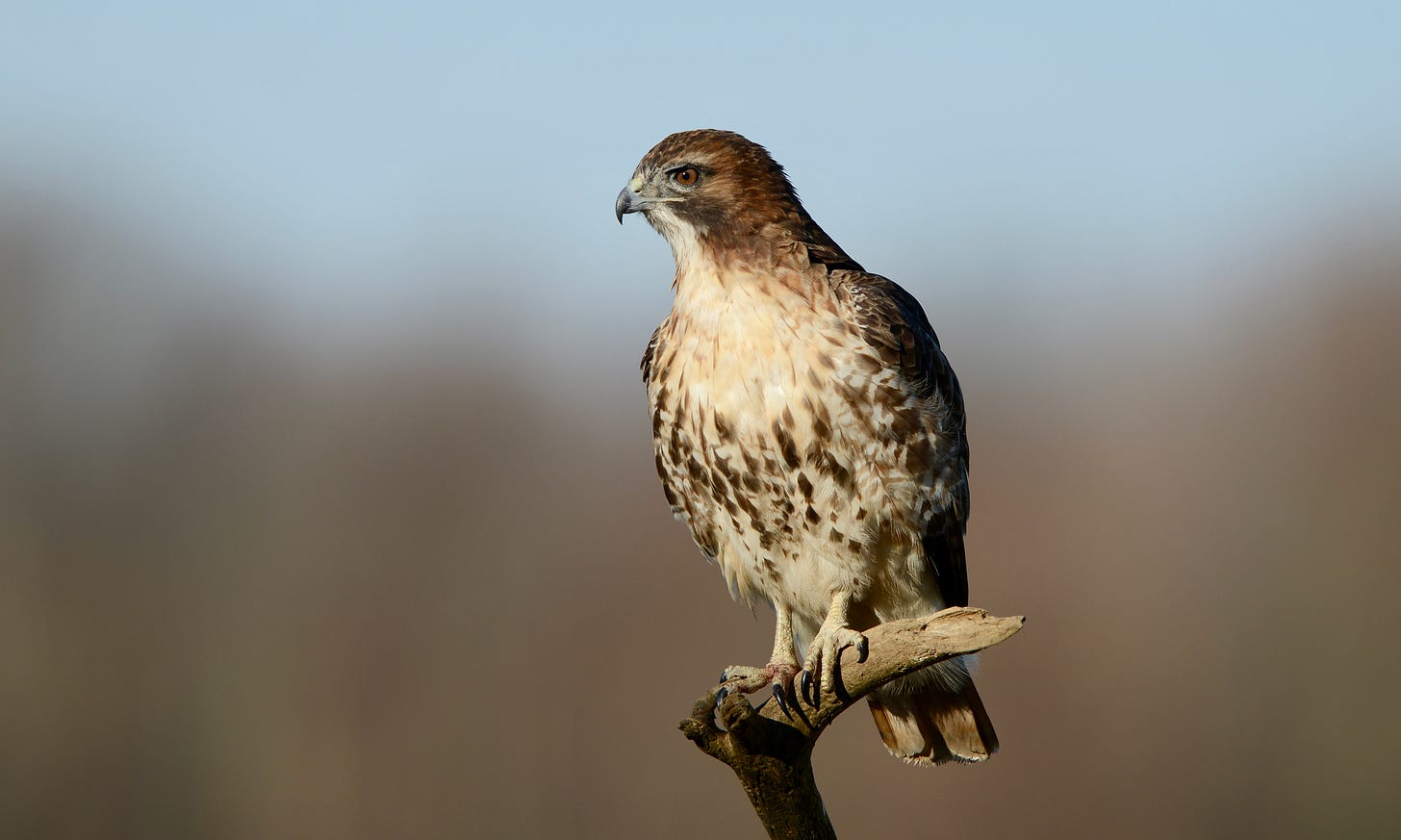Wings and Eyes of a Raptor
Of all the inventions we humans have come up with lately, I’m most impressed by drones. Looking out an airplane window as the earth unfolds below is always fascinating, but drone photography, used brilliantly in so many nature programs these days, gives us the wings and eyesight of a bird, so we can view our beautiful planet much as they do. Minus the ultraviolet glow they see, of course, which must make scenery even more incredible.
Raptors especially are gifted with great vision, able to see four to eight times farther and sharper than we do. So just imagine spreading your wings, rising up and joining the hundreds of thousands of them moving south these days as winter slowly closes in. What a trip that would be, tagging along!
Teaming up with a red-tailed hawk, perhaps, many of which are retreating from the northern third of their range. Staunch individualists, redtails often migrate on their own instead of ganging up and going all at once as broad-winged hawks do in mid-September, or traveling in graceful kettles like turkey vultures tend to.
Birds of open country, red-tailed hawks breed from treeline in Alaska and Canada all the way down to Panama, so are one of the most common hawks North Americans see. Their main hunting strategy is to perch on a tree or hydro pole and gaze down at the grass with their great binocular vision. When they spot movement below they drop like a stone and grab in their talons whatever is making it. Mice and meadow voles are swallowed whole. Larger prey take a bit of slicing and dicing with the hawk’s curved beak and sharp claws, three of which curve forward, one back. Their diet includes rats and large insects, glad news for urbanites and farmers alike.
Highway roadsides offer ideal hunting habitat, so redtails are frequently seen there, dark muscular forms more visible when leaves fall, as are the stick nests along fence rows where they raised their families last spring. Mottled brown above, adults sport a “belly band” of dark flecks across their white undersides, and the signature rufous tail, which darker-plumaged juveniles don’t acquire till their second year.
Soaring and circling on thermals as they scan fields and pastures for prey is another hunting strategy they use, showing off their broad rounded wings and short tail. Though we can’t in fact migrate with redtails, much as we’d love to, we can at least look up and marvel as they float past high overhead. Top of the food chain, and well fed on rodents, they’re one species we don’t have to worry about, which is good news indeed.





